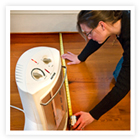You are here
Fire Prevention for Pre-Teens
Educational Workshops
Due to COVID-19, inspection stations hours in your area are likely to be suspended or adjusted. Please call ahead to make sure they are open.
 Our coalitions host educational workshops for parents and caregivers.
Our coalitions host educational workshops for parents and caregivers.
To find an event, select your state on the left-side navigation. If your state is not listed, contact your local coalition.
Educational Workshop Listings
Fire Prevention for Pre-Teens
 When it comes to fire prevention, we have good news and bad news. The good news is that kids this age have reached a stage of mental development where they are at a much lower risk of dying in a fire. The bad news is that home fires can still happen quickly, and older children are more likely to cause them, either intentionally or by accident. Here are some ways to protect your children.
When it comes to fire prevention, we have good news and bad news. The good news is that kids this age have reached a stage of mental development where they are at a much lower risk of dying in a fire. The bad news is that home fires can still happen quickly, and older children are more likely to cause them, either intentionally or by accident. Here are some ways to protect your children.
Top Safety Tips
- Working smoke alarms reduce the chances of dying in a fire by nearly 50 percent. They are a critical first step for staying safe, but in order to be effective, they have to be working properly. For the best protection, install smoke alarms on every level of your home and in every sleeping area.
- Consider installing a smoke alarm that has a 10-year battery.
- Keep candles at least 12 inches away from anything that can burn, and always blow them out when you leave the room or before you go to sleep. Teach older kids not to use candles in their bedrooms, unless supervised by an adult.
- Use common sense in the kitchen. Limit distractions when cooking and don’t leave a hot oven or stovetop unattended.
- Have a fire extinguisher in the kitchen in case of emergency, and make sure you know how it works. You might be surprised that most people don’t know how to use one.
- At this point, preteens and teens should know how to respond to the sound of a smoke alarm. But it never hurts to make sure. Make sure they know to get low and get out when they hear it.
- Practice feeling the door, doorknob and cracks around the door with the back of your hand to see if they are too hot. Help your children practice this step.
- Together, have your family plan and practice a home fire escape plan with two ways out of your house in case of a fire. It is important to have an alternate exit in case one is blocked by fire.
- Choose a place to meet outside that is a safe distance away from your home.
- If you cannot safely escape your home or apartment, keep smoke out of the room by covering vents and cracks around the door and call 911 or your fire department as quickly as possible. Then signal for help at the window with a light-colored cloth or a flashlight.
